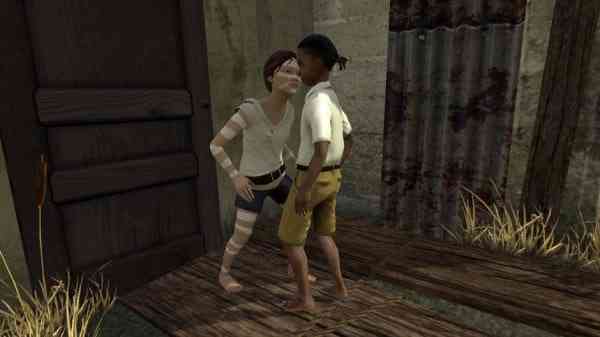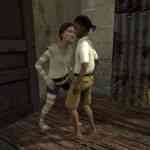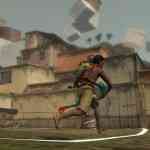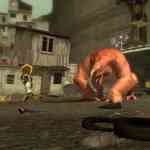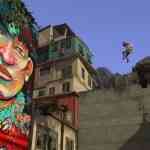One of the highlights of gaming’s latest trends involves the rise of the indie-game. Indie-game developers tend to dive into waters that many mainstream game developers are afraid to dip their toes in. Many Indie games remind me of early Nintendo games, with their strange concepts and odd story lines. These refreshing concepts are a pleasure to experience as they provide players with a nostalgic feeling while at the same time offering a new experience all together. Sony and Microsoft have not failed to notice the success of indie-games on the PC and they are now offering high quality indie titles for budget prices via their online stores. These games often offer something unique, something that instills players with a feeling of nostalgia and reminds them why the fell in love with video games in the first place.
Papo & Yo fully embraces its indie-game audience. The game’s subject matter at the core of this adventure is one that tugs at the heartstrings. Papo & Yo’s story is about a young boy’s battle against his abusive and alcoholic father. In this game, you play as Quico, a small boy no more than 10 years old, who escapes into his fantasy world with his robot toy Lula. Quico’s world is a unique and interesting environment with a bit of a South American feel to it. Quico’s world is also devoid of people, with the exception of a small girl who acts as a guide, and Monster; the representation of Quico’s father.
Monster typically remains docile and relaxed. He can be found either sleeping or can be guided around by Quico with the help of coconuts. Despite his relaxed nature, given the theme of the game something sinister remains. Monster has one insatiable hunger. Monster craves green frogs and upon consumption of one of these jumping menaces he is turned into a flaming beast who chases and attacks Quico. Quico’s fight against his father becomes clear at this point. It should be highlighted that Papo & Yo is one of those games where there is no combat. Quico is a child and is effectively powerless against his father; able to offer no resistance to Monster’s terrible rages, other than to run away and hide.
The core of Papo & Yo’s gameplay involves puzzle solving. Almost immediately I found the controls hampered Quico’s ability to get through doors or up onto high ledges. I found the puzzle solving to be very dry, lacking in any real creativity as I moved through the game. Solutions reveal themselves instantly, and it becomes less about problem solving and more about your patience with simple pushing and pulling puzzles. Ultimately, after clearing a puzzle, Quico is able to flip a switch, which in turn reveals another puzzle with a switch waiting at the end of it. The alcoholism and abuse metaphor is clear as day when Monster hurts Quico after eating the irresistible frogs he’s addicted to. I found this to be a truly unique and compelling idea as far as video games go. However, the problem with this is that Papo & Yo sacrifices the player experience for the sake of communicating its unique plot point. The metaphor and story it tells is compelling, yet the gameplay falls flat in comparison. Papo & Yo depends upon its message too much and is marred by its simplistic puzzles that lack any feeling of direction.
Despite being set in a beautiful environment with fantastic design, Papa & Yo can be quite unattractive at times. The game’s visuals suffer from frequent screen tearing as well as serious clipping and frame-rate issues. A couple of times I even found myself falling through the floor. Simply put, it is disappointing to see the sloppy visual issues permeating Papa & Yo. Regarding the audio, the music is simply brilliant and instills the game with more of its South American Vibe.
Papo & Yo left me with mixed feelings. Its’ delivery felt clumsy, yet its concepts and message are so engaging and interesting. Papo & Yo really tugged at my heartstrings, like few other games have managed as of late, and on that basis, despite some valid criticism, I feel it really is a worthwhile little game. The game contains technical issues and wholly uninteresting puzzles, but the brief moments of emotional story telling lead to a moving conclusion worth seeing through during its five hour tale.
